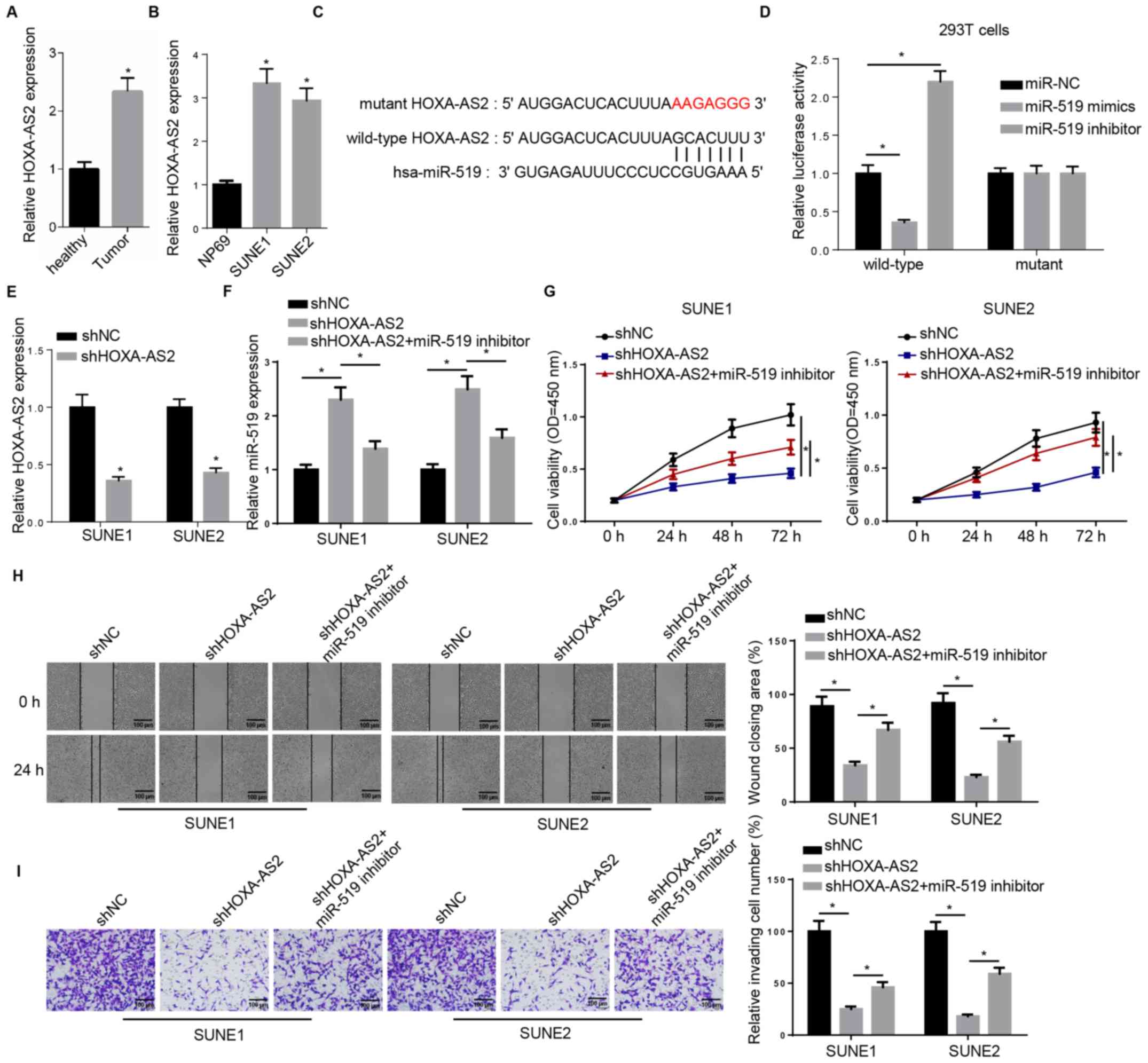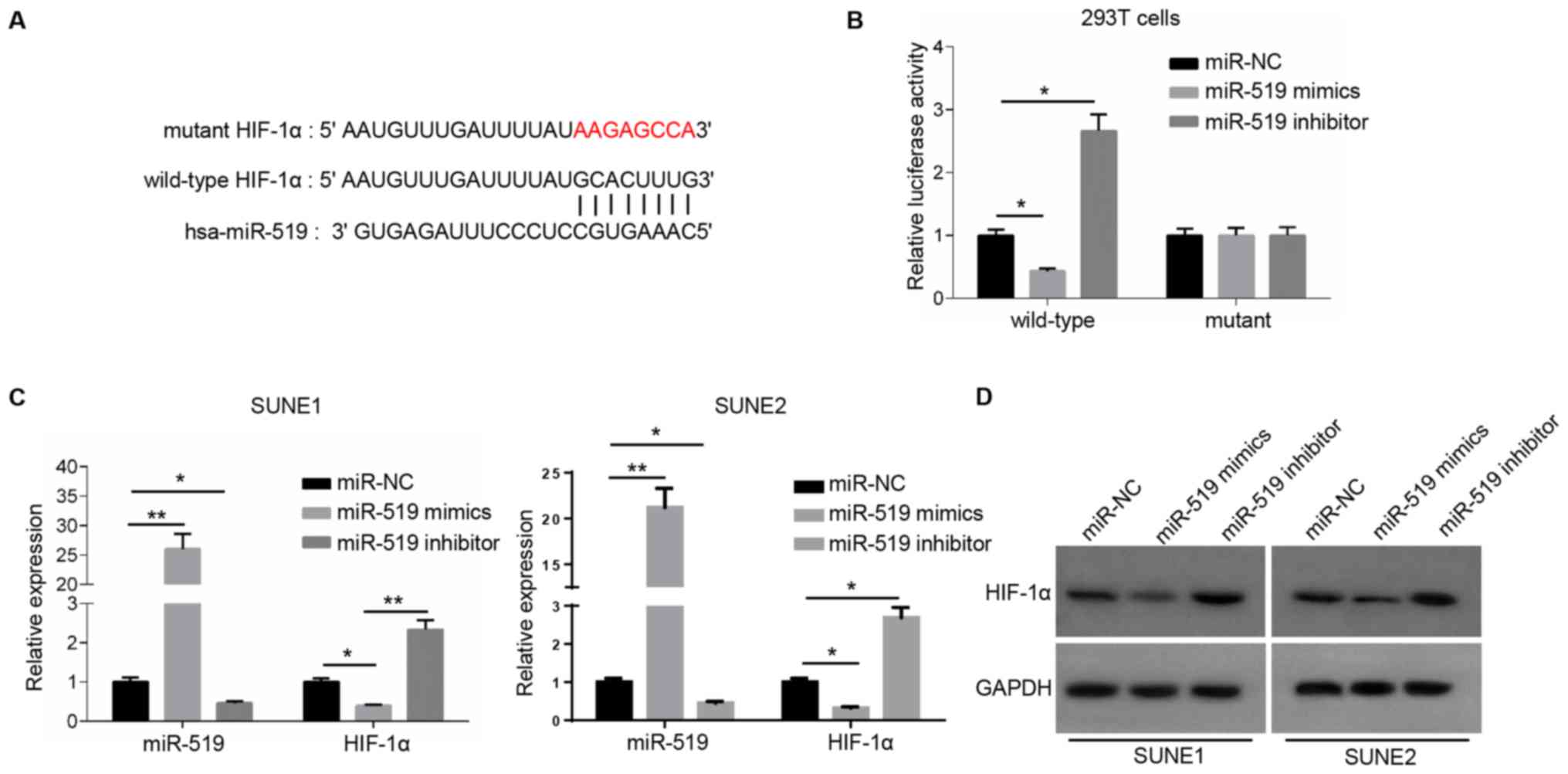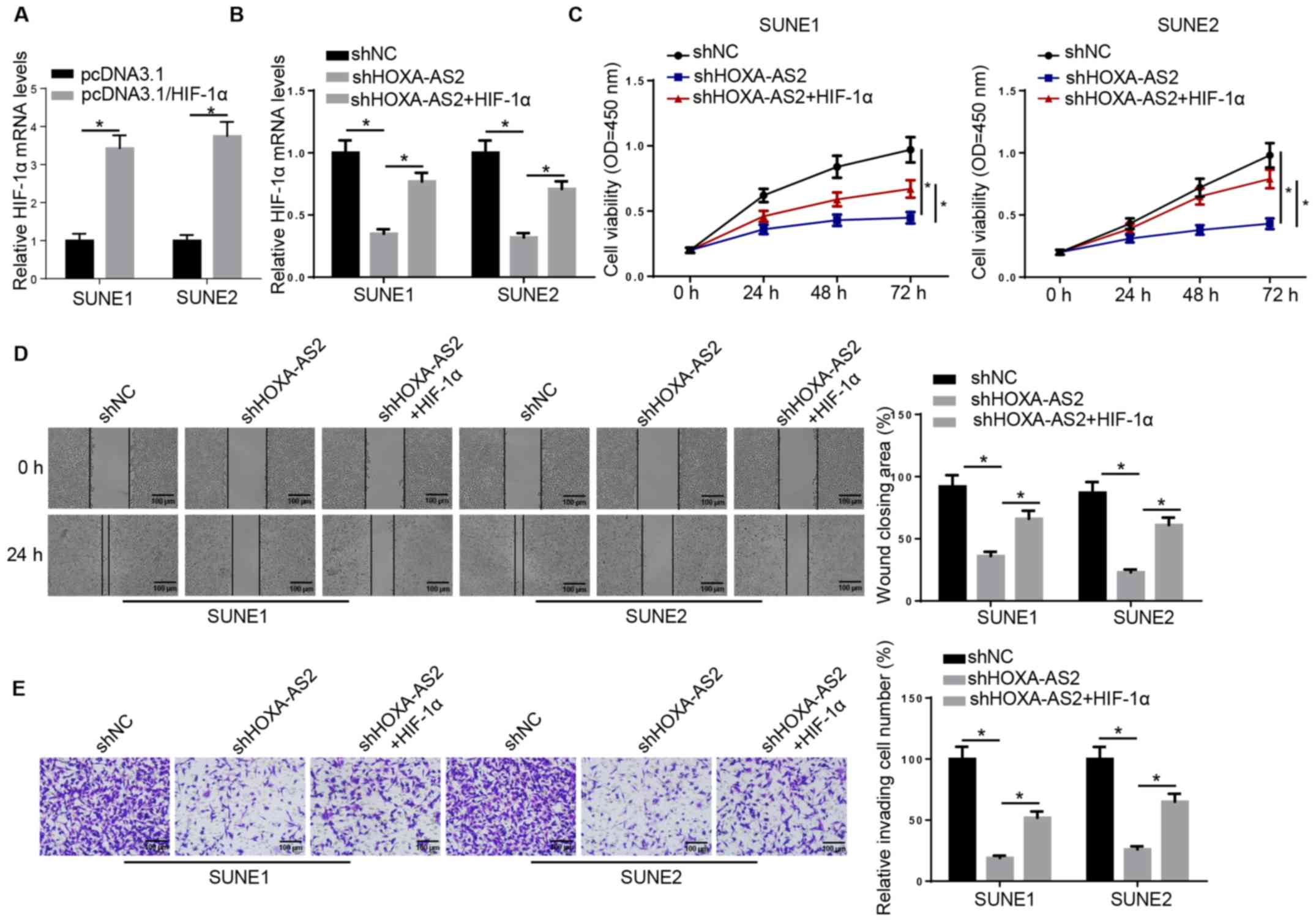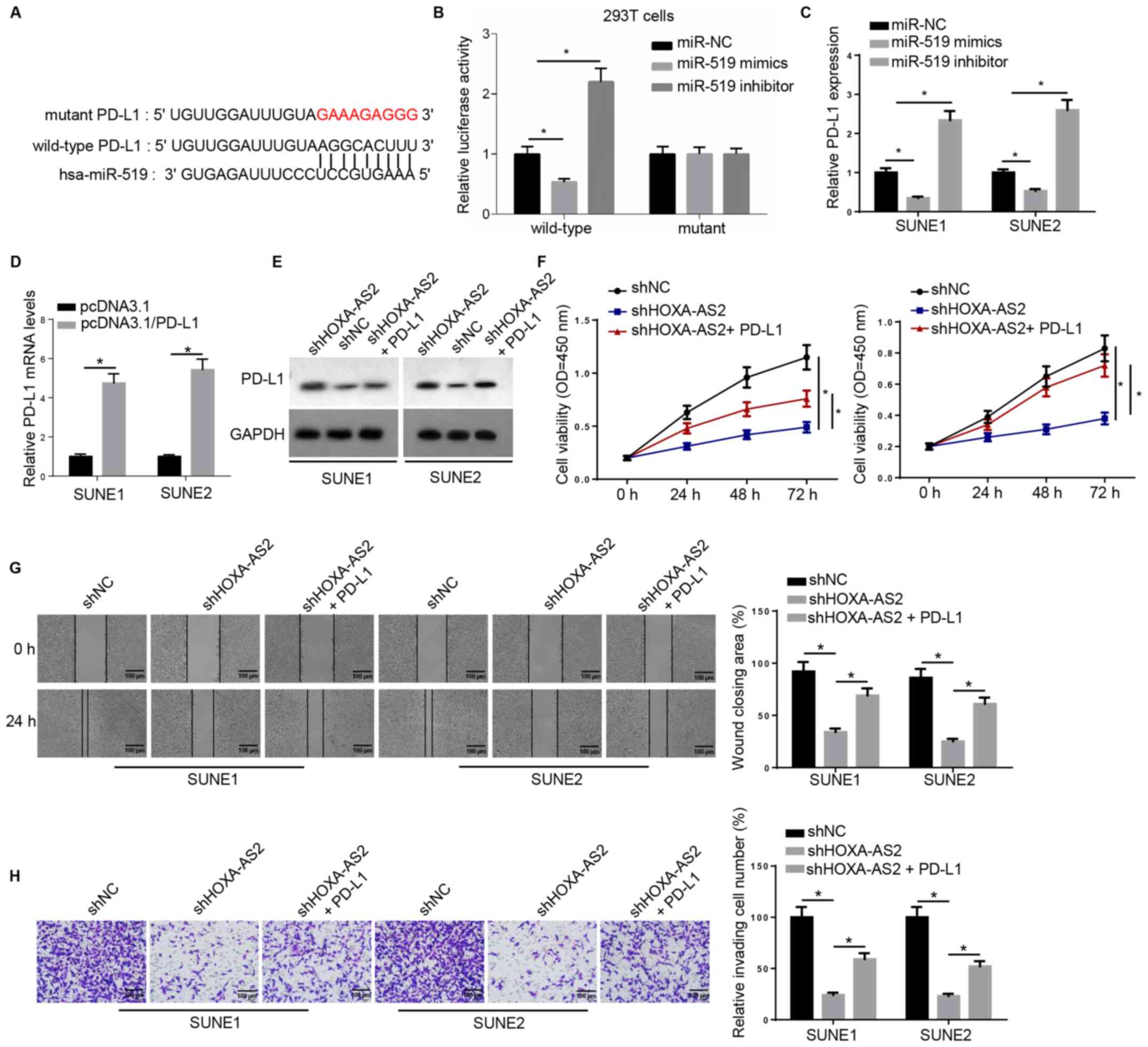|
1
|
Wei KR, Zheng RS, Zhang SW, Liang ZH, Li
ZM and Chen WQ: Nasopharyngeal carcinoma incidence and mortality in
China, 2013. Chin J Cancer. 36:902017. View Article : Google Scholar : PubMed/NCBI
|
|
2
|
Chang ET and Adami HO: The enigmatic
epidemiology of nasopharyngeal carcinoma. Cancer Epidemiol
Biomarkers Prev. 15:1765–1777. 2006. View Article : Google Scholar : PubMed/NCBI
|
|
3
|
Jia WH and Qin HD: Non-viral environmental
risk factors for nasopharyngeal carcinoma: A systematic review.
Semin Cancer Biol. 22:117–126. 2012. View Article : Google Scholar : PubMed/NCBI
|
|
4
|
Yu MC: Diet and nasopharyngeal carcinoma.
FEMS Microbiol Immunol. 2:235–242. 1990. View Article : Google Scholar : PubMed/NCBI
|
|
5
|
Fatica A and Bozzoni I: Long non-coding
RNAs: New players in cell differentiation and development. Nat Rev
Genet. 15:7–21. 2014. View
Article : Google Scholar : PubMed/NCBI
|
|
6
|
Xie M, Sun M, Zhu YN, Xia R, Liu YW, Ding
J, Ma HW, He XZ, Zhang ZH, Liu ZJ, et al: Long noncoding RNA
HOXA-AS2 promotes gastric cancer proliferation by epigenetically
silencing P21/PLK3/DDIT3 expression. Oncotarget. 6:33587–33601.
2015. View Article : Google Scholar : PubMed/NCBI
|
|
7
|
Tong G, Wu X, Cheng B, Li L, Li X, Li Z,
Nong Q, Chen X, Liu Y and Wang S: Knockdown of HOXA-AS2 suppresses
proliferation and induces apoptosis in colorectal cancer. Am J
Transl Res. 9:4545–4552. 2017.PubMed/NCBI
|
|
8
|
Lian Y, Li Z, Fan Y, Huang Q, Chen J, Liu
W, Xiao C and Xu H: The lncRNA-HOXA-AS2/EZH2/LSD1 oncogene complex
promotes cell proliferation in pancreatic cancer. Am J Transl Res.
9:5496–5506. 2017.PubMed/NCBI
|
|
9
|
Calin GA and Croce CM: MicroRNA signatures
in human cancers. Nat Rev Cancer. 6:857–866. 2006. View Article : Google Scholar : PubMed/NCBI
|
|
10
|
Ristimäki A: Tumor suppressor effect of
the microRNA miR-519 is mediated via the mRNA-binding protein HuR.
Cell Cycle. 9:12342010. View Article : Google Scholar
|
|
11
|
Abdelmohsen K, Kim MM, Srikantan S,
Mercken EM, Brennan SE, Wilson GM, de Cabo R and Gorospe M: miR-519
suppresses tumor growth by reducing HuR levels. Cell Cycle.
9:1354–1359. 2010. View Article : Google Scholar : PubMed/NCBI
|
|
12
|
Abdelmohsen K, Srikantan S, Kuwano Y and
Gorospe M: miR-519 reduces cell proliferation by lowering
RNA-binding protein HuR levels. Proc Natl Acad Sci USA.
105:20297–20302. 2008. View Article : Google Scholar : PubMed/NCBI
|
|
13
|
Yu G, Zhang T, Jing Y, Bao Q, Tang Q and
Zhang Y: miR-519 suppresses nasopharyngeal carcinoma cell
proliferation by targeting oncogene URG4/URGCP. Life Sci.
175:47–51. 2017. View Article : Google Scholar : PubMed/NCBI
|
|
14
|
Semenza GL: Hypoxia-inducible factor 1
(HIF-1) pathway. Sci STKE. 2007:cm82007. View Article : Google Scholar : PubMed/NCBI
|
|
15
|
Semenza GL: Targeting HIF-1 for cancer
therapy. Nat Rev Cancer. 3:721–732. 2003. View Article : Google Scholar : PubMed/NCBI
|
|
16
|
Xie W, Liu L, He H and Yang K: Prognostic
value of hypoxia-inducible factor-1 alpha in nasopharyngeal
carcinoma: A meta-analysis. Int J Biol Markers. Jun 10–2018.(Epub
ahead of print). doi: doi.org/10.1177/1724600818778756. View Article : Google Scholar
|
|
17
|
Cha ST, Chen PS, Johansson G, Chu CY, Wang
MY, Jeng YM, Yu SL, Chen JS, Chang KJ, Jee SH, et al: MicroRNA-519c
suppresses hypoxia-inducible factor-1alpha expression and tumor
angiogenesis. Cancer Res. 70:2675–2678. 2010. View Article : Google Scholar : PubMed/NCBI
|
|
18
|
Giatromanolaki A, Koukourakis IM, Balaska
K, Mitrakas AG, Harris AL and Koukourakis MI: Programmed death-1
receptor (PD-1) and PD-ligand-1 (PD-L1) expression in non-small
cell lung cancer and the immune-suppressive effect of anaerobic
glycolysis. Med Oncol. 36:762019. View Article : Google Scholar : PubMed/NCBI
|
|
19
|
Liang Z, Tian Y, Cai W, Weng Z and Li Y,
Zhang H, Bao Y and Li Y: High-affinity human PD-L1 variants
attenuate the suppression of T cell activation. Oncotarget.
8:88360–88375. 2017. View Article : Google Scholar : PubMed/NCBI
|
|
20
|
Huang ZL, Liu S, Wang GN, Zheng SH, Ding
SR, Tao YL, Chen C, Liu SR, Yang X, Chang H, et al: The prognostic
significance of PD-L1 and PD-1 expression in patients with
nasopharyngeal carcinoma: A systematic review and meta-analysis.
Cancer Cell Int. 19:1412019. View Article : Google Scholar : PubMed/NCBI
|
|
21
|
Cao Y, Chan KI, Xiao G, Chen Y, Qiu X, Hao
H, Mak SC and Lin T: Expression and clinical significance of PD-L1
and BRAF expression in nasopharyngeal carcinoma. BMC Cancer.
19:10222019. View Article : Google Scholar : PubMed/NCBI
|
|
22
|
Zhou Y, Shi D, Miao J, Wu H, Chen J, Zhou
X, Hu D, Zhao C, Deng W and Xie C: PD-L1 predicts poor prognosis
for nasopharyngeal carcinoma irrespective of PD-1 and EBV-DNA load.
Sci Rep. 7:436272017. View Article : Google Scholar : PubMed/NCBI
|
|
23
|
Fei Z, Deng Z, Zhou L, Li K, Xia X and Xie
R: PD-L1 induces epithelial-mesenchymal transition in
nasopharyngeal carcinoma cells through activation of the PI3K/AKT
pathway. Oncol Res. 27:801–807. 2019. View Article : Google Scholar : PubMed/NCBI
|
|
24
|
Livak KJ and Schmittgen TD: Analysis of
relative gene expression data using real-time quantitative PCR and
the 2(-Delta Delta C(T)) method. Methods. 25:402–408. 2001.
View Article : Google Scholar : PubMed/NCBI
|
|
25
|
Ilyas M: Next-generation sequencing in
diagnostic pathology. Pathobiology. 84:292–305. 2017. View Article : Google Scholar : PubMed/NCBI
|
|
26
|
Luftig M: Heavy LIFting: Tumor promotion
and radioresistance in NPC. J Clin Invest. 123:4999–5001. 2013.
View Article : Google Scholar : PubMed/NCBI
|
|
27
|
Bray F, Ferlay J, Soerjomataram I, Siegel
RL, Torre LA and Jemal A: Global cancer statistics 2018: GLOBOCAN
estimates of incidence and mortality worldwide for 36 cancers in
185 countries. CA Cancer J Clin. 68:394–424. 2018. View Article : Google Scholar : PubMed/NCBI
|
|
28
|
Fang Y, Wang J, Wu F, Song Y, Zhao S and
Zhang Q: Long non-coding RNA HOXA-AS2 promotes proliferation and
invasion of breast cancer by acting as a miR-520c-3p sponge.
Oncotarget. 8:46090–46103. 2017. View Article : Google Scholar : PubMed/NCBI
|
|
29
|
Wang Y, Zhang R, Cheng G, Xu R and Han X:
Long non-coding RNA HOXA-AS2 promotes migration and invasion by
acting as a ceRNA of miR-520c-3p in osteosarcoma cells. Cell Cycle.
17:1637–1648. 2018. View Article : Google Scholar : PubMed/NCBI
|
|
30
|
Xia F, Chen Y, Jiang B, Du X, Peng Y, Wang
W, Huang W, Feng T and Li X: Long noncoding RNA HOXA-AS2 promotes
papillary thyroid cancer progression by regulating
miR-520c-3p/S100A4 pathway. Cell Physiol Biochem. 50:1659–1672.
2018. View Article : Google Scholar : PubMed/NCBI
|
|
31
|
Zhang Y, Xu J, Zhang S, An J, Zhang J,
Huang J and Jin Y: HOXA-AS2 promotes proliferation and induces
epithelial-mesenchymal transition via the miR-520c-3p/GPC3 axis in
hepatocellular carcinoma. Cell Physiol Biochem. 50:2124–2138. 2018.
View Article : Google Scholar : PubMed/NCBI
|
|
32
|
Ambros V: The functions of animal
microRNAs. Nature. 431:350–355. 2004. View Article : Google Scholar : PubMed/NCBI
|
|
33
|
Jalali S, Bhartiya D, Lalwani MK,
Sivasubbu S and Scaria V: Systematic transcriptome wide analysis of
lncRNA-miRNA interactions. PLoS One. 8:e538232013. View Article : Google Scholar : PubMed/NCBI
|
|
34
|
Cramer T, Yamanishi Y, Clausen BE, Förster
I, Pawlinski R, Mackman N, Haase VH, Jaenisch R, Corr M, Nizet V,
et al: HIF-1alpha is essential for myeloid cell-mediated
inflammation. Cell. 112:645–657. 2003. View Article : Google Scholar : PubMed/NCBI
|
|
35
|
Rius J, Guma M, Schachtrup C, Akassoglou
K, Zinkernagel AS, Nizet V, Johnson RS, Haddad GG and Karin M:
NF-kappaB links innate immunity to the hypoxic response through
transcriptional regulation of HIF-1alpha. Nature. 453:807–811.
2008. View Article : Google Scholar : PubMed/NCBI
|
|
36
|
LaGory EL and Giaccia AJ: The
ever-expanding role of HIF in tumour and stromal biology. Nat Cell
Biol. 18:356–365. 2016. View
Article : Google Scholar : PubMed/NCBI
|
|
37
|
Unwith S, Zhao H, Hennah L and Ma D: The
potential role of HIF on tumour progression and dissemination. Int
J Cancer. 136:2491–2503. 2015. View Article : Google Scholar : PubMed/NCBI
|
|
38
|
Yu T, Tang B and Sun X: Development of
inhibitors targeting hypoxia-inducible factor 1 and 2 for cancer
therapy. Yonsei Med J. 58:489–496. 2017. View Article : Google Scholar : PubMed/NCBI
|


















